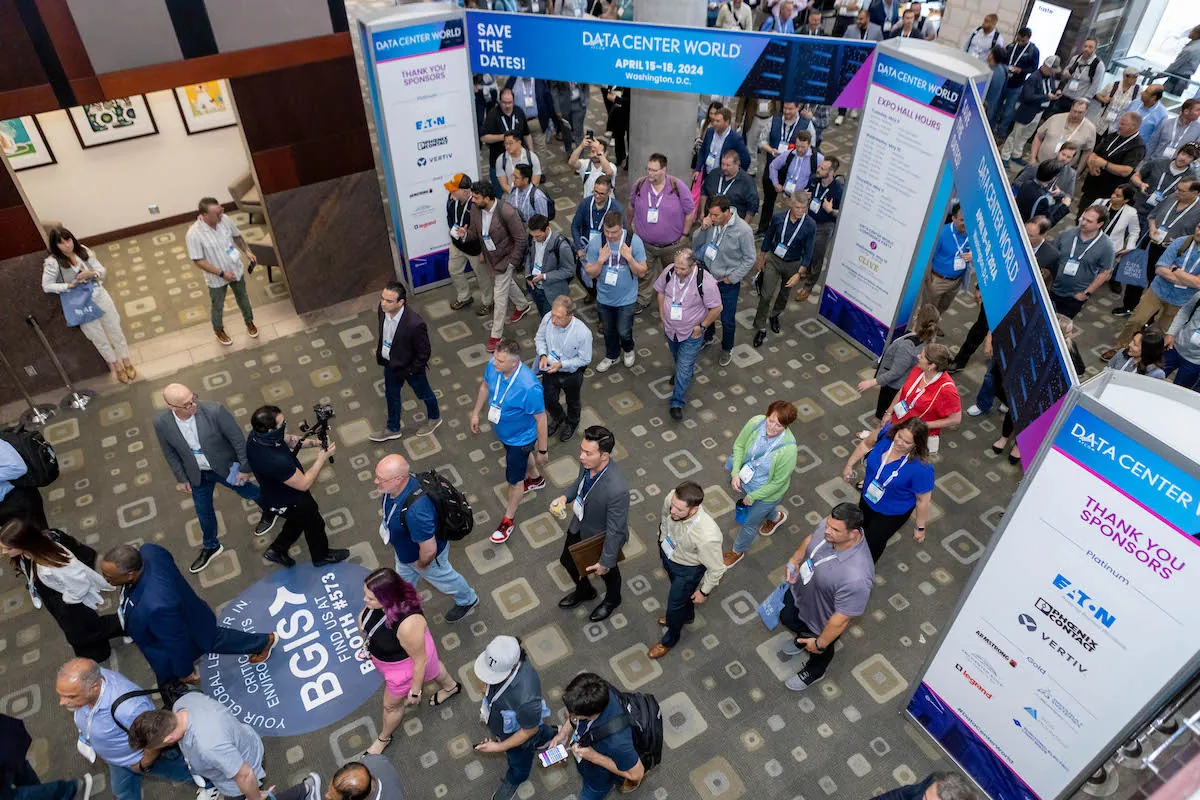Airflow Management Awareness Month Rewind: Top 5 Data Center World Presentations15 min read

Photo by DCW
Over the years we’ve proudly presented many presentations at industry conferences around the world, but none more than at AFCOM Data Center World. Today we take a look back at the top presentations we’ve had the honor of delivering at the conference.
1. For Most Data Centers, Liquid and Air Cooling Will Not be Mutually Exclusive (2019)
A recent report from Technavio indicates that the adoption of liquid-based cooling is high, as it is considered more efficient than air-based cooling. Globally liquid-based cooling is expected to grow at a remarkable rate through 2020, posting a CAGR of almost 16% during the forecast period. So, why is this level of adoption happening? Increasing rack densities lead by high performance computing (HPC) and the quest to improve efficiency are driving an increase in liquid cooling design strategies and deployment. While still relatively sparse, liquid cooling will become more prevalent, but this does not mean the end of air cooling. In this session, we’ll discuss how to implement liquid cooling while maintaining appropriate air-cooling conditions and fully realize efficiency gains. Lastly, we’ll discuss how to get started and get ahead of the market when it comes to improving cooling efficiency.
2. Clarifying ASHRAE’s Recommended Vs. Allowable Temperature Envelopes and How to Raise Cooling Set Points Without Raising Inlet Temperatures
The topic of raising temperatures in data centers used to be met with much criticism in the industry, but in recent years has become more accepted. A big driver for this acceptance has been ASHRAE’s expanded envelope for recommended and allowable server inlet temperatures. However, while this has eased the discussion, there are still some questions that have been left unanswered. What’s the difference between recommended and allowable? Which one is best to use? What steps must be taken to safely raise set points? How do you ensure servers are still adequately cooled? What if you have different server types (A1, A2, A3, A4)? This presentation will examine these questions to give a clearer understanding of ASHRAE’s recommended and allowable guidelines. Also covered will be an explanation on how, in some cases, it is possible to raise cooling control set points without raising server inlet temperatures.
3. Cooling Optimization 101: A Beginner’s Guide to Data Center Cooling
As new personnel enter the industry, they are often bombarded with a slew of buzz words and marketing messages that would lead them to believe that data centers almost run themselves. And while monitoring and DCIM solutions are improving the management of power and cooling, an understanding of the fundamental science is crucial to both see through the hype and get the most out of management systems. More so, as the veterans in our industry start to retire, much of the basic knowledge around power and cooling is often overlooked when training their successors. This session will provide that basic knowledge and give a fundamental understanding of the power and cooling infrastructure in a data center, with an emphasis on cooling optimization. In this session, you’ll learn how to recover stranded cooling capacity, reduce operating costs, improve IT equipment reliability, and prolong the life and capacity of the data center.
4. Data Center Monitoring and Management Best Practices: How You Can Benefit from Artificial Intelligence and Machine Learning
As data centers have adapted to many changes over the past year, managing sites with limited on-site personnel has become a new challenge. Because of this, a renewed focus by data center managers has been placed on remote monitoring and management solutions to help ensure operations continue to run as efficiently as possible. And while legacy monitoring and DCIM solutions provide some resolve to this issue, ever-changing needs and requirements by data centers are driving much change and innovation in this segment of the industry. This session will examine the software solutions that are currently available to remotely monitor and manage data center operations, with an emphasis on the power and cooling infrastructure. We will also examine emerging technologies like artificial intelligence, machine learning, and virtual reality as well as new concepts like DMaaS, and discuss how they are changing the landscape of data center monitoring and management. This analysis will take many factors into consideration including, real-time thermal performance, airflow management, power consumption, risk mitigation, and cooling optimization.
5. Strategies for Re-Using Data Center Heat Energy and Their Impact on PUE (Both Real and Perceived)
While striving for a PUE of less than 1.00 undoubtedly gets us into the realm of physics-defying fantasy, that does not however mean there is no value in recycling the heat energy produced by our ICT equipment. After all, we have already recognized the great value in actually increasing PUE by dramatically reducing the divisor of our PUE equation through virtualization, turning off comatose servers, migrating from Windows to Linux, etc. The PUE rock showing above the water level may be bigger, but the sea level itself is lower (hence, the ongoing discussion for new and improved metrics). Such is the case with looking for ways to perform useful work with the thermal energy produced by ICT equipment. While we may not give ourselves a bragging-rights PUE decimal fraction, perhaps we can improve our organization’s bottom line and contribute positively to the planet’s health. This session will explore five strategies for re-using data center heat energy while discussing their impacts on PUE, the bottom line, and the environment.
The industry's easiest to install containment!
AisleLok® solutions are designed to enhance airflow management,
improve cooling efficiency and reduce energy costs.
The industry's easiest to install containment!
AisleLok® solutions are designed to enhance airflow management,
improve cooling efficiency and reduce energy costs.
0 Comments